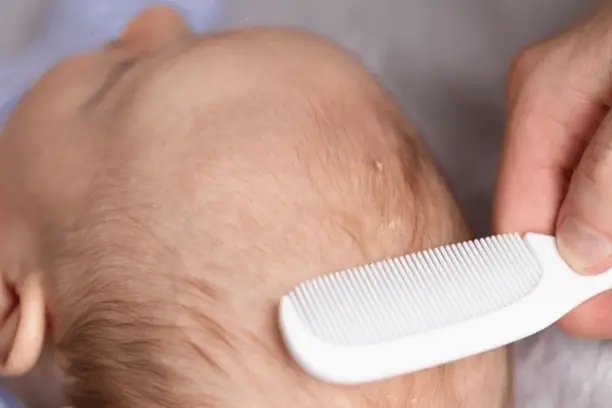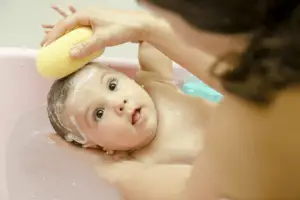What Causes Cradle Cap in Newborns and How Can It Be Handled?

Welcoming a new family member is one of the most remarkable moments in parents’ lives. This brings a lot of happiness and parenting challenges.
While some of them can frustrate parents, some can make them serious about them. And those concerns are related to their newborn’s health. Why should someone not be serious about their newborn health?
Sure, they should be! But you should know what is dangerous for your child and what is not. So, if you are afraid that your baby has a cradle cap and wondering what causes it, read this guide to get the necessary knowledge.
Cradle cap
This is a common skin concern among children under the age of 1 year. However, it is more common when a baby is 3 months old. This is also known as a scalp condition because its symptoms often start and stick to the scalp.
However, the symptoms can also appear on the face, eyebrows, behind ears, and lower body parts. Cradle cap happens in most children and goes away after a few days to weeks. But in some cases, symptoms can persist for a few months.
What causes this?
There is no exact cause behind this. Doctors suggest different possible causes or triggers. Maternal hormonal transfer can trigger oil production and result in flake formation.
Fungus overgrowth can also lead to a cradle cap. Overactivation of sebaceous glands can lead to more oil production and increased flake formation. Doctors can look at the symptoms and can diagnose them. But they cannot tell what exactly caused this.
Symptoms
Cradle cap leads to:
- Yellow or white flakes formation
- Greasy and scaly skin
- Crusty patches
- Slightly inflamed and red skin
Severe symptoms lead to excessive flake buildup.
Is it contagious?
No, it cannot spread from person to person. There is no way it can spread from one person to another. It happens due to excessive oil production or a fungus overactivation already in everyone’s skin. So, there is no way it can be contagious.
How to handle it?
Avoid its triggers
Sometimes, prevention is more effective than treatment. So, you must follow preventive measures at all costs in order to prevent further damage and encourage healing.
You must keep the following points in mind when dealing with cradle cap in mind:
- Do not use hot water or expose your newborn to heat for long.
- Do not scratch your baby’s skin to remove flakes.
- Do not try to pick flakes.
- If your baby’s skin is sweating, clean the affected area regularly to avoid infection.
- Moisturize regularly.
- Do not use fragrance or chemical products.
- Avoid using harsh soaps and shampoo. Trust only medicated products.
Keep the area clean
Cleaning the skin is very important to avoid worsening any disease. For cradle cap, simple cleaning and hygiene practices can be enough for their treatment. If you regularly wash or clean the affected area, the bacteria will be removed, and flakes will loosen.
Regular washing, plus shampooing with a mild baby shampoo, will help remove flakes over time. You can then use a brush to remove them.
Bathing your baby is a good and safe way, but you should not give your newborn more than twice a week. Plus, use lukewarm water in baths.
Use a medicated product

At some point, you may be required to use products to handle its flareup. If symptoms are not improving over time or spreading to other body parts, use a cradle cap shampoo to counter them.
This will help remove flakes and relieve other symptoms. Use the shampoo as mentioned on the product label and drop the usage slightly as the symptoms start improving.
Massage regularly
Put some drops of essential oil on your hand and massage your newborn’s scalp and other affected areas gently. Regular massaging for a few minutes daily will help increase blood circulation, remove flakes, and create better bonding.
Massage is completely safe and compulsory. Even if the baby is not affected by skin diseases, it is good to massage your baby regularly.
When to seek professional help?
Almost all cases are treatable at home. Most cases do not need treatment, and symptoms fade out on their own.
If the symptoms are not going away or worsening, or if the treatment is not working, you have to seek professional help. If there is a rash, pimples, severe redness, or fussiness in your baby, it could be due to an underlying skin condition.





